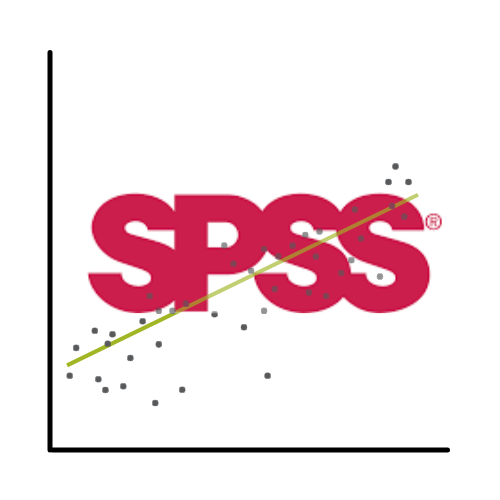
Introduction to Data Analysis with SPSS
A 10-Module online tutorial with direct instructor support
OVERWHELMED trying to run statistics in SPSS?
LOST when trying to analyze data?
WANT a starting point for developing statistical analysis skills?
This online tutorial is for you….
I’m Karen Grace-Martin, tutorial instructor.
My goal is that by the end of the tutorial, you will have a strong foundation for running statistical tests with SPSS, including working with data sets, defining and recoding variables, and running univariate and bivariate descriptives, tests, and graphs.
In this online tutorial, I’ll provide a great introduction for anyone learning statistics in SPSS for the first time, or for SPSS users who have relied upon menus but want to learn the syntax.
 Karen Grace-Martin MA
Karen Grace-Martin MA
In this ten-module, online tutorial, you and I will cover:
- The SPSS environment and how it works, including menus and syntax
- Defining and formatting variables in SPSS so they work with your analysis
- Descriptive Statistics, Graphs, and Tests for one or two categorical or numerical variables
- Editing and Customizing Graphs and Tables professionally and efficiently
- And more!
Who Is This Tutorial For?
This tutorial is suitable for students and professionals. It’s a Stage 1 tutorial and it covers both data analysis skills and software skills.
This tutorial is for you if you:
- You’re new to statistics and you now need to implement them in SPSS.
- You’re working on your first research project.
- You’re familiar with another statistical software package, but want to learn SPSS.
- You’ve never used anything other than Excel and want to learn SPSS.
- You’ve used SPSS before, but are struggling through it. (Maybe you were self-taught and could use an overview, or maybe you haven’t had to use statistics in a while and would now love a refresher.)
- You’re pretty familiar with SPSS windows, but would like to learn syntax to improve efficiency and reproducibility.
It is NOT for you if you:
- You’ve used SPSS for years and have the fundamentals down.
- You’ve never taken any statistics classes before and don’t understand basic statistical concepts.
How Does It Work?
This course is a 10-module online tutorial.
All lessons are recorded sessions.
During each session, the instructor will cover core concepts and steps.
Have questions? No problem!
In addition to the lessons, you’ll also have direct support from the instructor via a Forum where you can get additional assistance on tutorial concepts, deepen your knowledge, and clarify any questions.
Where Do I Access Recordings and Material?
For each of the modules, you will have a set of training resources and material.
As a participant of the Introduction to Data Analysis with SPSS tutorial, you can access these for 12 months in our participant-only website.
 Data Sets
Data Sets
Real research data sets in SPSS format.
 Recorded Lesson Videos
Recorded Lesson Videos
Always available so you can review material at your preferred schedule.
 Software Syntax and Demo Videos
Software Syntax and Demo Videos
Step-by-step videos for SPSS. Syntax files available to download so you can save and edit them for your own analysis.
 Forum Access
Forum Access
Ask your instructor about tutorial content or how to apply it to your own data analysis.
 Handouts
Handouts
Session slides and supplementary material to support your learning.
 Suggested Resources
Suggested Resources
External videos, articles, or exercises that we recommend to support your learning.
You’ll have access to this site and all the related materials and resources for ONE FULL YEAR. That means you can re-watch sessions and ask additional questions again during that 12-month period.
Often, our students report they understand the material at a deeper level on a second or third pass. You’ll learn more every time, so take advantage of it!
What’s Covered in the Tutorial?
We’re covering everything you need to confidently get started preparing data, running one and two-variable statistics, creating and editing tables and graphs. We’ll include:
1. Getting Acquainted with the SPSS Environment
- The Data View, Variable View, Output, and Syntax Window
- Working with Menus
- Changing Options
- Syntax Rules
- Useful Features
2. Getting Started with Data
- Opening and Importing Data Files
- Saving and Subsetting Data Sets
- Naming, renaming, and labeling variables
- Defining variable types, widths, missing values, and levels of measurement
3. Univariate Descriptives, Graphs, and Tests
- Descriptive statistics for Categorical and Numerical Variables
- Bar charts for Categorical Variables
- Histograms and Box Plots
- One sample t-tests and non-parametric tests
4. Working with Data
- Sorting Data
- Selecting Data
- Splitting Data
- Merging Data
- Aggregating Data
5. Creating and Recoding Variables
- String Variables rules and recoding
- Recoding and Creating Numerical Variables
- Date Variables
- Checking your work
6. Bivariate Descriptives, Graphs, and Tests: Two Categorical Variables
- Grouped Box Plots, Histograms, and Line Graphs
- Two-Sample t-Tests
- Two-Sample t-Tests
- One-Way ANOVA
- Wilcoxon Rank Sum
- Wilcoxon Sign Rank
- Friedman’s Test
7. Bivariate Descriptives, Graphs, and Tests: Two Numerical Variables
- Scatter Plots for Two Numerical Values
- Pearson and Spearman Correlations
- Simple Linear Regression
8. Bivariate Descriptives, Graphs, and Tests: One Numerical and One Categorical Variable
About Your Instructor
Hi, I’m Karen Grace-Martin, your tutorial instructor.
As president and founder of The Analysis Factor, I’ve been supporting researchers like you through their statistical planning, analysis, and interpretation since 1997.
My goal is to help you improve your statistical literacy so you can bring your important research results into the light with confidence.

Karen Grace-Martin MA, MA
Prerequisites
So what kind of background in statistics do you need?
This tutorial will show you how to use SPSS to apply the statistical knowledge you’ve already acquired in an Introductory Statistics course. It assumes you’ve never used SPSS before, though you may be familiar with using a different statistical software.
We’re assuming you understand fundamental statistical concepts, like:
- How to interpret descriptive statistics like frequency tables, central tendency, and spread
- Basic hypothesis testing and confidence intervals for one or two variables
- The different types of univariate and bivariate graphs, like histograms, scatterplots, box plots and bar charts
If you have questions about whether you’re ready for this class, just email us. We’ll give you our honest opinion and won’t pressure you into anything. We want you to succeed!
Your Satisfaction Is Guaranteed
As with all of our programs, your satisfaction is guaranteed. Your registration fee is fully refundable for up to 30 days after purchase. If you participate fully in the tutorial – watch, read, and try out what is included – and find you are not satisfied, we will give you a full refund. Just notify us within 30 days of purchasing the program.
